#Chinese Culture
Explore tagged Tumblr posts
Text

🎉 Happy 71st Birthday to the legendary Jackie Chan! 🎂🥋 Today we celebrate not just a martial arts icon, but a global inspiration. At 71, Jackie still amazes us with his energy, passion, and timeless charm. From jaw-dropping stunts to heartwarming humor, he’s given us decades of unforgettable moments on screen.
64 notes
·
View notes
Text

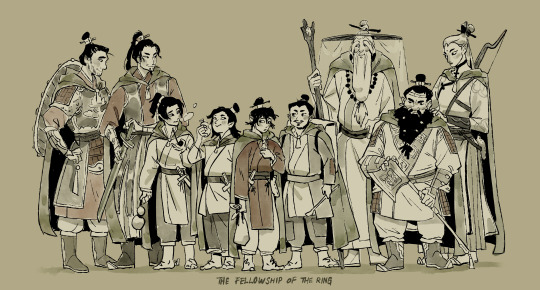


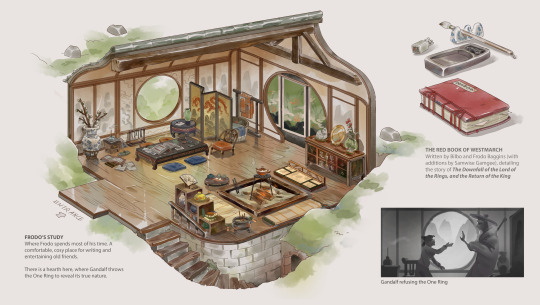

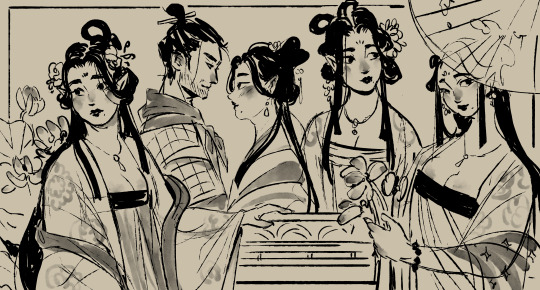
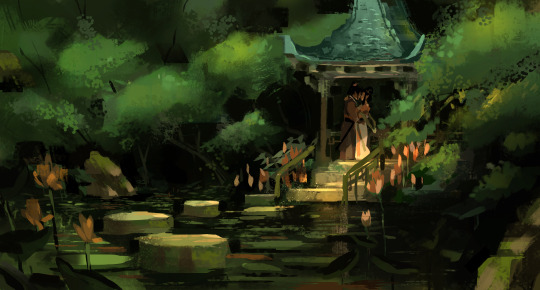
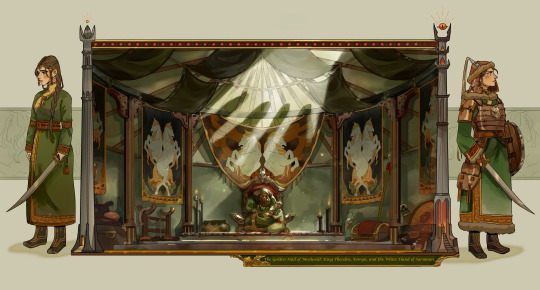

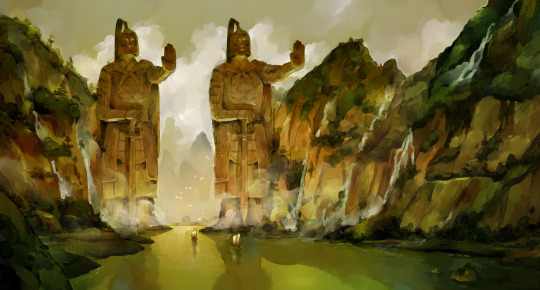
First Post!
I deleted my old tumblr because... man idk why it was covid-times and the prefrontal cortex was not in the room with us!! Anyways, I was reminded by my lovely friend @repecca that tumblr exists, and that some of my work has been going around on here, so I decided to post some of my work up officially! Starting off with my most notable (?) work to date, here's my LOTR: The Middle Kingdom Project. Now, it's been over a year since I posted this, and at the time I was... really searchingfor myself artistically, and I decided to go all in on something that I'd been ruminating on for a long time.
So, hello, again. I'm Leia. I do visual development/BG design, and I'm also a writer of things. I love fantasy and transformative work. It's nice to meet you.
#lotr#lord of the rings#the middle kingdom#chinese culture#hanfu#frodo#visual development#visdev#concept art
14K notes
·
View notes
Text
April 20, Beijing, China, National Museum of China/中国国家博物馆 (Part 1 - Dehua white porcelain exhibition/德化白瓷展):
Aaand finally, the National Museum of China/中国国家博物馆! I was lucky enough to see the famed Dehua white porcelain exhibition/德化白瓷展 here. Some of you may recognize some of these pieces already, since pictures and shorts of them have been circulating online way before I went on this trip, but there are many many other pieces too. The pieces I post here are only a small portion of the entire exhibition, so if you ever get a chance to see the exhibition elsewhere in person, don't hesitate. This stuff is amazing.
First up is one of the two that has been gaining popularity online, the piece named 神话 or "Legend".

The first time I saw a porcelain piece like this, I thought that the clothing part was made with paper? But no, the light fabric of the clothing, the hair, it's all porcelain. Keep in mind when looking through these pictures: every part of every piece is porcelain.
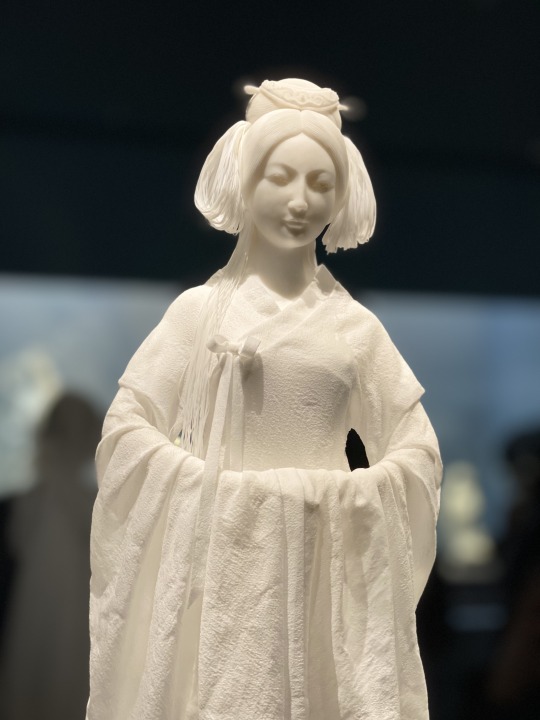
This piece is the other one that was becoming popular, the piece named simply 纸, or "Paper". If you don't look up close and see the glossy surface, you can't tell it's actually porcelain. I cannot for the life of me imagine the kind of magic that was used to turn clay into this
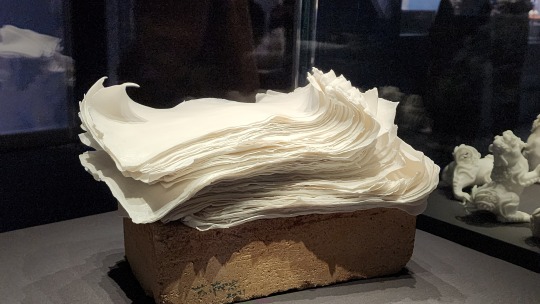
Anyway, this is a good point to introduce Dehua porcelain a little bit. Dehua porcelain is a regional specialty of Dehua/德化, which is located in Fujian province, and is known for its expressiveness and white color. For this reason it's also known in the West as "Blanc de Chine" (French: "white of China"), and this should be the reason why this exhibition is named 中国白, which basically means the same thing. The history of Dehua porcelain goes back to Song dynasty (960 - 1279), and it is still being produced today. Many of the pieces I'm posting here are modern pieces.

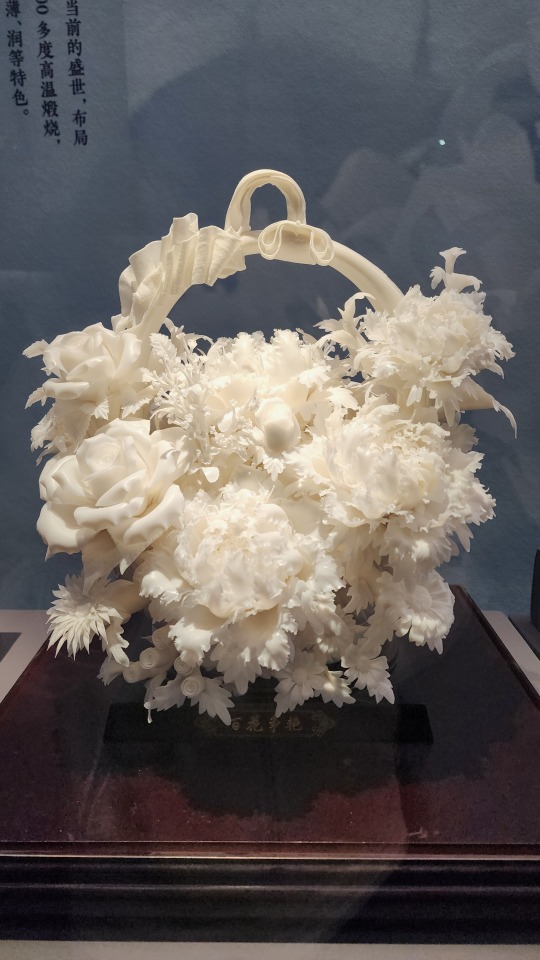
But Dehua white porcelain can be colored too (I imagine the color must be painted on later, because the white comes from the clay itself), and when it is colored, it looks like it came right out of a painting

This piece is especially amazing to me. Look at the texture, look at those details. Zoom in and you will find that there are actually a bunch of porcelain ants on this porcelain tree stump. Porcelain ants. I never expected to use porcelain as an adjective when describing ants. Wtf. It's like a manifestation of a scene from an older animated movie.
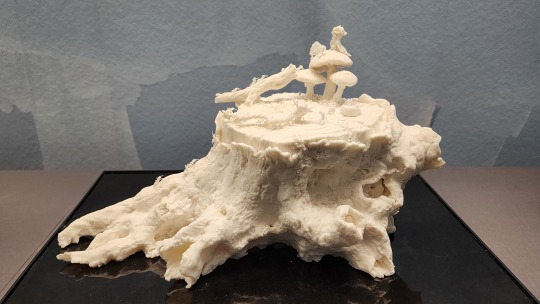
Peanuts are called 花生 in Chinese, which literally means "flower grow", and because it also has a long shelf life, it symbolizes longevity and a happy marriage. Also a fun fact: because Watson of Sherlock Holmes is usually phoenetically translated as 华生 (huá shēng) in Chinese and sounds similar to 花生 (huā shēng), you will find that many in the Chinese SH fandom refers to Watson as "peanut".

This piece is titled 春色满园, or "garden filled with spring scenery". This is also a common 4-character word used to describe gardens in spring. I'm guessing the figure depicted here is one of the flower gods. It is one of my personal favorites because of its superb depiction of movement, it's as if the flower god will really fly away on clouds at any moment
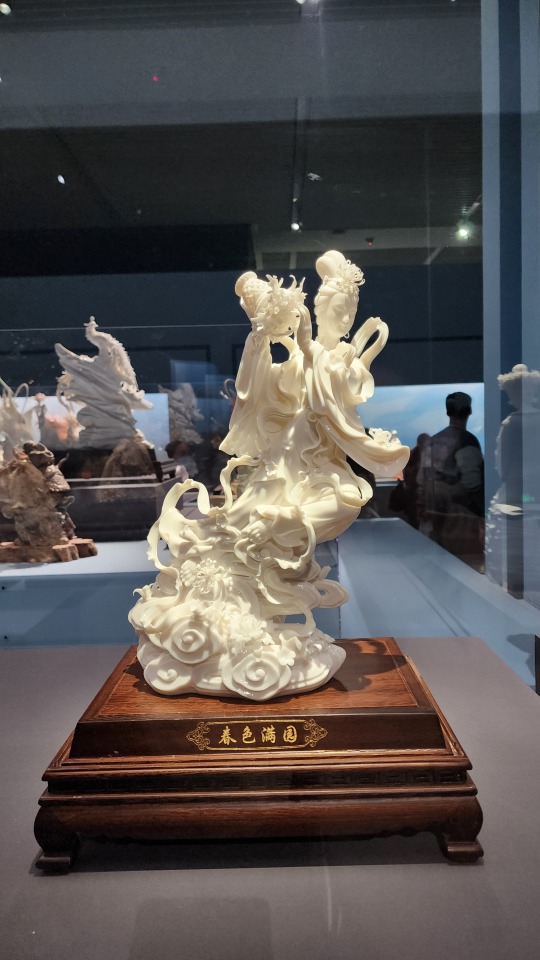
More depictions of traditional Chinese deities, specifically Chang'e/嫦娥, the moon goddess. That moon rabbit is too cute.


Depictions of what I'm assuming is the Four Heavenly Kings/四大天王, based on the items they are holding. The Four Heavenly Kings are Buddhist deities.

Look at her clothing! That porcelain is so thin it's almost see-through! Also is it depicting Li Qingzhao/李清照, the famous female poet from Song dynasty? She does have a famous ci poem that's about paddling a boat in a lake full of lotuses while drunk

The piece titled 锦绣前程, or "future as vibrant and prosperous as silk brocade". This is also a common 4-character word used in well wishing. The figure in this piece is holding a xiuqiu/绣球, a ball made of silk, which was usually seen as a token of love


Somewhat more modern-themed pieces:
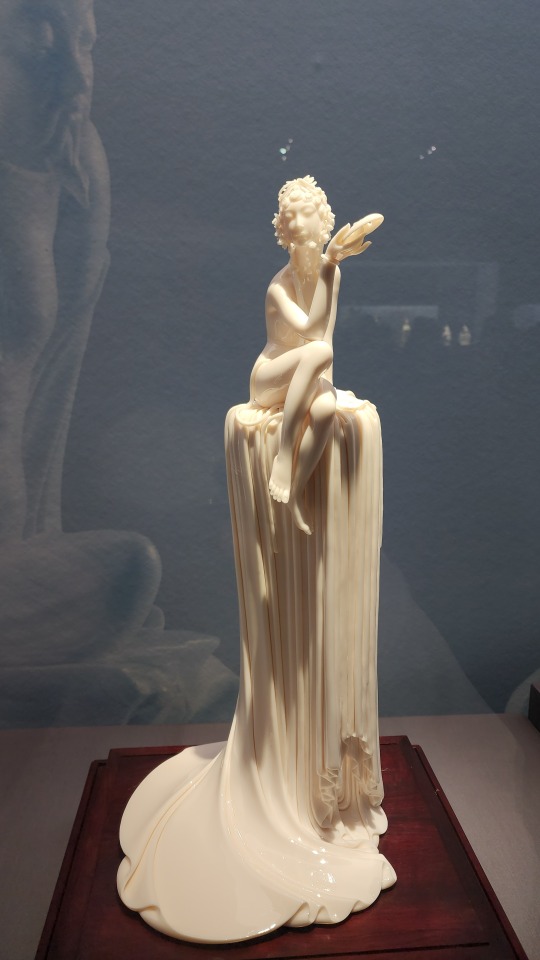

Among the hundreds of amazing pieces, this one caught my attention for its unique texture. When everyone else was trying to turn the clay into these thin sheets representing fabric or paper or flower petals, this artist took the noodle approach. Not many visitors seemed to like it, but I think it's pretty cool

Piece titled 运势如虹, or "fortune like the rainbow", also a 4-character word used in well wishing. Traditionally horses symbolize vitality and success, hence why many people use the words 马到成功 ("horse's arrival brings success") and 龙马精神 ("vitality of dragons and horses") in well wishes during Year of the Horse
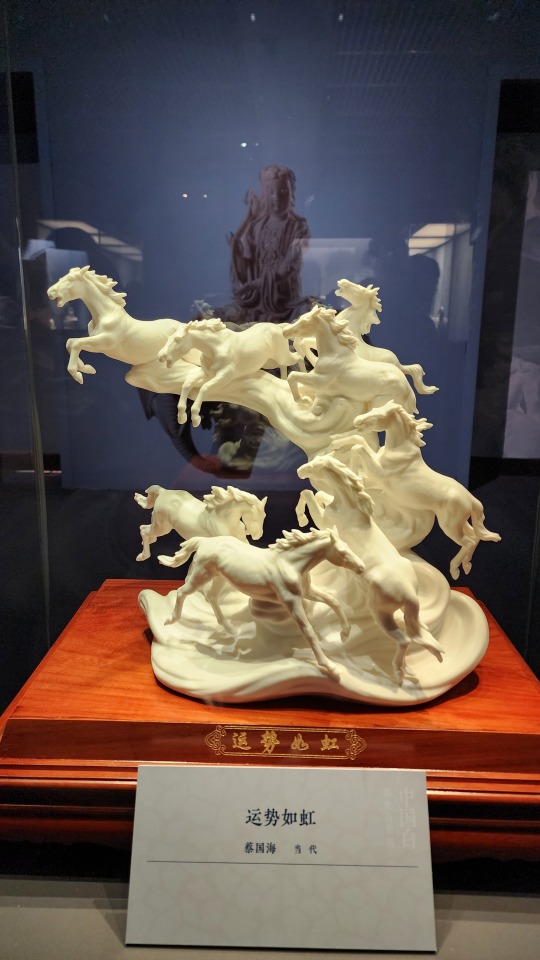
Stay tuned for Part 2 of the Dehua white porcelain exhibition!
#2024 china#beijing#china#national museum of china#dehua porcelain#blanc de chine#porcelain#chinese art#chinese culture#art#culture
3K notes
·
View notes
Text


Carved green jade vase with coral flowers. China, 20th century.


Carved dark jade vase with coral branches. China, 19th century.


Carved prasiolite (green quartz) vase with coral branches. China, 20th century.
Gemstone carving is one of China's most ancient and important art forms. It is a craft steeped in history and tradition, continually reflecting the philosophy and culture of the Chinese people.
By traditional Chinese definition, hardstones are divided into two categories: jade, which is the mineral nephrite, and all other precious and semi-precious stones. Jade is considered the most esteemed gem of all and associated with many desirable qualities in humans.
#china#🇨🇳#Chinese#Chinese crafts#chinese craftsmanship#carved gemstones#Jade#quartz#prasiolite#coral#vases#flowers#sino#han Chinese#Chinese culture#gemstone carving#Chinese heritage#20th century China#chinese arts#decor#interiors#gemstones#precious gems#jewels#gems
2K notes
·
View notes
Text
Cultural exchange is great and I'm glad that Americans and Chinese people are interacting on RedNote. But you should be aware that:
RedNote is largely used by the upper-middle and upper classes of China. It's basically a copy of Instagram with extra emphasis on the lifestyle flexing. It's not a representation of wider Chinese society but rather a curated experience for the top 20% or so.
On top of that, it is heavily regulated and censored by the government. LGBTQ+ content is heavily censored. And criticisms of the Chinese government or Chinese culture are deleted instantly.
So please continue using RedNote for as long as it's available and learn as much about China from it as you can. But take it with a grain of salt and realize that what you're seeing is basically the Chinese equivalent of American Instagram models as curated by the government.
2K notes
·
View notes
Text
Chinese Mythology- Ne Zha
In case you forgot, there’s a little (well, not-so-little) country in between Russia, India and the sea near Australia called China. She’s pretty well-known for being big, red, and old.
As well as other things, but that’s all pretty new and not what we’re talking about here, I draw the line at those topics.
China is like the grandma of most Asian countries within the Sinosphere (area of influence that spread Chinese culture through the Silk Road, Tang dynasty diplomats and ideologies like Confucianism and Taoism and occasionally Buddhism).
As such, Chinese mythology and lifestyle practices are very deeply rooted in cultural beliefs across Asian countries like Japan, South Korea, Malaysia, Singapore, and Vietnam.
This isn’t a post about the history of China. Well, it is, but the history of China is some 10,000 years of culture and 4000 years of recorded history, and I have neither the time nor the patience to go through all of it. To be quite honest, about 70% of it is irrelevant to even the lives of Chinese people.
What I’d like to talk about, instead, is some Chinese culture and mythology.
Many of you might have heard of the Journey to the West, or more specifically the Monkey King Sun Wukong. Undoubtedly he’s probably the number one IT boy in China, our biggest cultural icon and representative myth, and his name is synonymous with power, defiance, and badassery.

You may have seen him featured in the recent hit game, Black Myth: Wukong!
Much of Wukong’s story involves his various shenanigans in his attempt to go to the West and retrieve Buddhist sutras with the monk Xuanzang and several other eclectic and iconic characters. However, Wukong’s history is not as well-known. In fact, much of his early days were spent in constant battle with the Heavenly Court.
That is what I want to talk about: the Heavenly Court. Essentially China’s pantheon. Wukong is so well-known that I feel it’s unnecessary for me to add any more commentary beyond woah, he is so cool, and other people probably have made enough content about him that anything I could add would be 画蛇添足 or paint feet on a snake (a Chinese idiom that means to stop adding useless details that don’t make any sense or serve any purpose).
Regardless.
China, beyond just Wukong, has an enormous selection of mythology involving gods, spirits and immortals as well as their battles against demons and monsters. These stories aren’t as well-known outside China but also feature prominently in what makes up the Chinese mindset. Having said that, here’s my attempt to inspire someone to make a Dragon Ball equivalent that doesn’t feature Wukong.
___
I figured now would be as good a time as any to start with 哪吒三太子,or the Third Prince Ne Zha, since recently the Ne Zha 2 has smashed some records and brought the myth of Ne Zha into more prominence.

By the way, go watch this movie! I'll gush about this later, but it's super good.
As with most everything in Chinese history and mythology: overly-long exposition and background is always needed. In the 16th century, two dudes got together and decided to record the fall of the Shang Dynasty and the rise of the Zhou Dynasty in a novel. Being dramatic, they romanticized the historical tale and added a lot of pizzazz, including spirits, monsters, and gods. This tale is now referred to as 封神演义,or 封神榜: The Romance of the Inauguration of the Gods, or more commonly translated as Investiture of the Gods.

This story serves as the basis for much of Chinese mythology and storytelling. Think of the Iliad or the Odyssey.
Ne Zha is a character in Investiture of the Gods. He’s not a key character in the main plot, which centers around King Zhou of Shang (who ironically rules over the Shang Dynasty and not the Zhou Dynasty, which uses a different Zhou pronounced differently in Chinese). However, he’s probably more famous than King Zhou is, just because he’s so fun, and also he’s featured very prominently in many of the stories we tell kids.
According to the Investiture of the Gods, Ne Zha was born during the Shang Dynasty under the rule of King Zhou. He eventually becomes part of the rebel faction that overthrows King Zhou of Shang and establishes the Zhou Dynasty. For now, though, he is just a kid. His homeland is called Chentang Pass.
In fact, Ne Zha was born with hacks. He’s the incarnation of the 灵珠子, or the Spiritual Pearl, a ball of condensed spiritual energy. As such, he’s pretty OP from birth.
He has two older brothers who are already immortals, called Jin Zha (which means Gold… Zha) and Mu Zha (which means Wood Zha) and his parents wanted five sons named Gold, Wood, Water, Fire and Earth, representing the five elements, with Zha as a suffix.
However, in popular culture, it’s known that Ne Zha, originally Fire, absorbed his brothers Water and Earth in the womb. Because of this, his mother, Lady Yin, is pregnant with him for over three years- which really sucks. When he’s born, he manifests as what looks like a big meatball.
His father, Li Jing, who’s a very high-ranking military general, freaks out and tries to stab him, but he pops out of the meatball as a fully-formed child, and is bestowed the name Ne Zha, literally: That Zha, since he’s three Zha-s in one. Kind of funny.
Ne Zha, since he’s OP, could talk and walk from birth and skipped the baby stage and went right to infant. He was taken as the disciple of 太乙真人, or Realized One of Yin and Yang. We’ll call him Master Taiyi for simplicity. He gets two cool weapons: 混天绫, the Skyblinding Sash, or a sentient moving red ribbon similar to Doctor Strange’s red cape, and 乾坤圈, the Ring of Heaven and Earth, a gold size-changing ring.
Ne Zha is still a human kid, despite being super OP, so when he’s little he asks his mom if he can go out of Chentang Pass to play. She’s like, sure! What’s the worst that can happen!
Oh boy.
Ne Zha wanders for a bit, then decides to take a bath in a river and uses the Skyblinding Sash as a towel. Basically the equivalent of using a tactical nuke to squish an ant. This powerful weapon being used as a towel sends so much energy through the stream that it literally reaches all the way to the East China Sea.
The Dragon King of the East China Sea is called Ao Guang, and he’s also got three sons. In the most well-known Ne Zha movie from 1979, he looks like this:
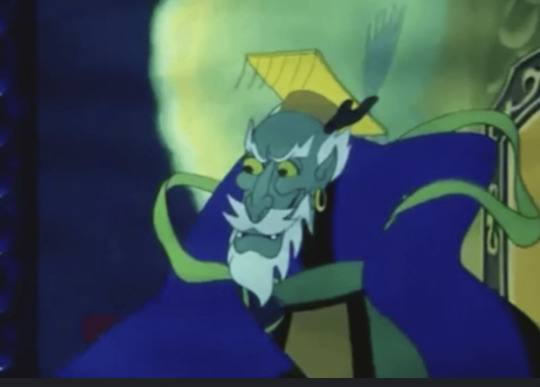
Ao Guang is like, what the fuck? He sends a yaksha, a mischievous water spirit, to check things out (no, not the yaksha you're thinking of.)
Ne Zha basically makes the ancient Chinese equivalent of a your mom joke to the yaksha, who gets super offended and tries to fight him. Then the yaksha gets his ass thoroughly kicked by a seven-year-old, who uses the Ring of Heaven and Earth to basically bash his head in. Yikes.
Ao Guang’s soldiers report this to him, and he’s very troubled by his lackey’s violent end at the hands of China’s worst iPad kid. Ao Bing, who is Ao Guang’s third son, volunteers to go beat up this seven-year-old kid, and is like, I’m the mighty third dragon prince of the East China Sea, there’s no way this toddler can beat me!
Not only does Ne Zha beat Ao Bing, he beats him so badly that he ends up pulling Ao Bing’s tendons out to make a belt for his dad Li Jing. Ao Bing probably died a staunch advocate for birth control. Ne Zha maybe needs some therapy.
Regardless, when Ao Guang hears his precious baby son has been killed rather painfully, he freaks out and goes to complain to Li Jing. Ne Zha is like, oops I killed your son, he was weak anyway, maybe you should train your next kid to be less pathetic, and Ao Guang is like you son of a bitch I’m reporting you to the Jade Emperor!
The Jade Emperor, by the way, is the leader of the Heavenly Court. In Chinese mythology, unlike many religions, being a god doesn’t necessarily mean you’re a good or virtuous person, it just means you got a promotion. Essentially it’s like being a government worker.
There is sometimes discussion on whether the Emperor in the myth is the Heavenly Emperor or the Jade Emperor. They're usually considered different people, with the Jade Emperor being an underling of the Heavenly Emperor, but the exact details get foggy. For the purposes of storytelling, I will assume the Emperor in this story is the Jade Emperor.
Ne Zha says, oh shit what do I do, and goes to his Master Taiyi for help. With an invisibility spell Master Taiyi gave him, he goes to Ao Guang’s house and kicks his ass.
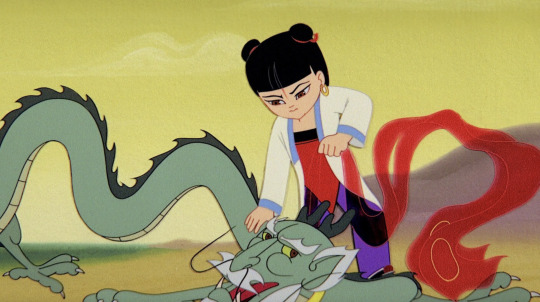
Ao Guang, feeling thoroughly wronged, gathers the other three dragon kings of the North, South and West China Seas respectively and decides they’re going to sue Ne Zha and his family in front of the Jade Emperor.
Lady Yin, Ne Zha’s mom, tells him to chill the fuck out and sits him in their house’s backyard. Ne Zha, thoroughly bored, decides he’s going to do some archery practice with some fancy bows and arrows, which are all inscribed with their family name.
He uses the literal Emperor’s bow and arrow, which were stored there for safekeeping and were unliftable like Thor’s hammer or Excalibur, and casually shoots an arrow up into a cave and kills the disciple of a lady named 石矶娘娘 Lady Stone Spirit.
Lady Stone Spirit kidnaps Ne Zha’s dad after recognising the name on the arrow, and Li Jing is like, yo I’m nowhere strong enough to use that bow and arrow, let me go back home so I can find the true culprit.
Eventually they find out it’s Ne Zha, and Ne Zha flips on Lady Stone Spirit. Master Taiyi eventually kills Lady Stone Spirit for him after Ne Zha loses his weapons.
Master Taiyi then says, oops, remember Ao Guang, that dragon king you pissed off? Well, he’s back and he’s pissed, and he’s got the Jade Emperor on his side. Ao Guang vows he’ll take revenge for his son and his dignity on Chentang Pass and Ne Zha’s parents.
Li Jing, who’s a bit of a dick father, is royally pissed off at Ne Zha. He’s always been very strict on Ne Zha, and has never liked him much, and basically tells Ne Zha to go fuck himself. Ne Zha, who’s mischievous but responsible, decides he’s going to save his family.
In quite possibly the most gruesome children’s tale you’ve ever heard, in order to pay his parents back for birthing him, he cuts all the flesh off his own bones and then cuts his own bones up as penance and to satisfy the dragon king’s wrath. Metal.

Excuse this blurry image- it's hard to find the exact scene in 4k.
Ne Zha’s wandering spirit tells his grieving mother to build him a temple and try to get him a new body, so she does. The temple goes viral, and Li Jing finds out and smashes everything. Ne Zha is like, what the fuck was that for? Now father and son properly hate each other.
Master Taiyi, this story’s MVP, builds Ne Zha a new body out of lotus roots, and he is reborn in a lotus flower. That’s why he’s sometimes called Ne Zha the lotus prince, and why he’s commonly associated with lotus flowers and lotus roots.
Master Taiyi gives him two new weapons: the 火尖枪, Fire-tipped Spear, a spear that shoots fire, and the 风火轮: Wheels of Wind and Fire, which are basically flying roller skates in the shape of two gold wheels.
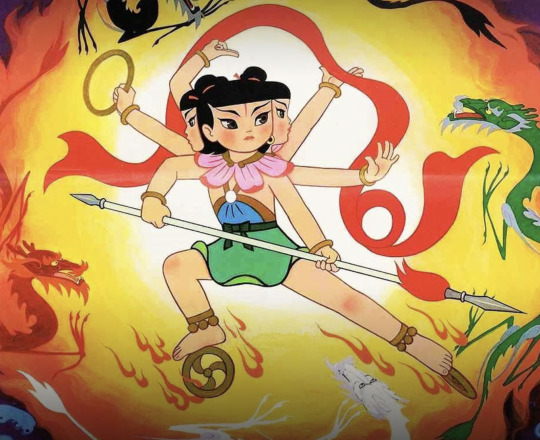
Look at that, so fashionable.
Ne Zha tries to go and beat up his asshole father, and Li Jing quickly realises he’s about to get his ass kicked by his pissed-off deified son. Remember when I said Ne Zha absorbed his brothers Water and Fire in the womb?
Because of this, he can now manifest four more arms and two more heads whenever he wants to become 三头六臂哪吒, Ne Zha of Three Heads and Six Arms. Sick.
The Jade Emperor decides enough is enough after seeing Ne Zha beat his dad up a million times. He goes to the Buddha for help, and the Buddha gives Li Jing a mini pagoda which can trap any demon, monster or spirit within it. Li Jing becomes a deity referred to as the Pagoda-Bearing Lord, and Ne Zha is forced to chill out on the patricide.

This is how the tale is known in popular culture, mostly because of a 1979 movie, produced by Shanghai Animation, which changed the original tale quite a bit. I've been using many images from the 1979 Ne Zha.
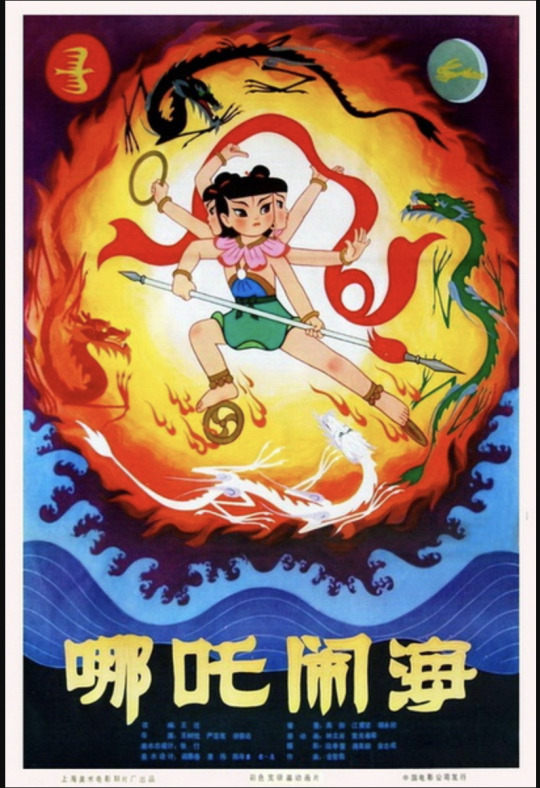
Movie name: Ne Zha Conquers the Sea, otherwise known as Murder Toddler Terrorizes Local Aquatic Ecosystem
For one, in the movie, Ao Guang and Ao Bing are evil oppressors who eat the children of Chentang Pass. Additionally, details are known differently across different iterations of the myth. For example, in Journey to the West, Ne Zha gets his name because it’s literally written on his hands when he’s born.
Since Ne Zha flies around so quickly on his Wheels of Wind and Fire roller skates, people sometimes see him as a patron deity of racing. If they ever make another Fast and Furious they should give him a cameo.
He is so famous that he’s had like a billion animated movies, stage plays and children’s books written about him. Traditionally, he’s depicted as a kid about seven to ten years old, on his roller skate wheels, holding his staff, with his ring turned into a gold bracelet he wears on his wrist and his red sash flying behind him. He has quite the iconic hairstyle: two space buns!
He’s such an iconic figure in Chinese culture: recent media has included him in many iterations.
Gaming fans will recognise him from Black Myth: Wukong as the aura-farming red fire dude with sick eyeliner and space buns.
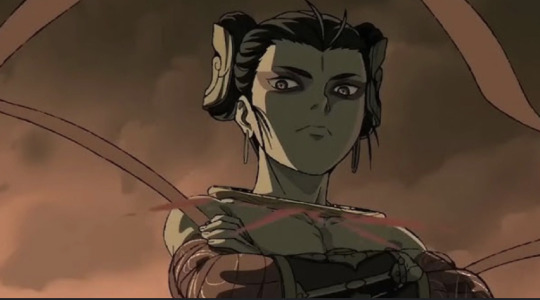
I am not gonna lie this is probably the coolest design of Ne Zha I've ever seen.
The most iconic version of him is probably the 1979 version, though the recent Ne Zha movies from 2019 and 2025 are arguably just as popular now.
There was a 2021 movie called New Gods: Nezha Reborn that is a separate adaptation from Ne Zha 2019 and Ne Zha 2 2025, which was kind of a mid movie but worth a watch.
Several of the adaptations of Ne Zha that have become iconic:

Ne Zha 2019 ^ in his child form


Ne Zha from Fei Ren Zai (非人哉), a comedy series about mythological characters in modern China ^

The Legend of Ne Zha from 2003, a children's TV series ^
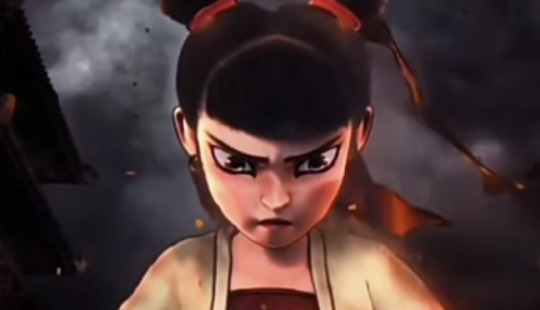

Child and Adult (reincarnated in modern world) versions of Ne Zha in 2021 New Gods Reborn: Ne Zha ^
Sometimes though he’s depicted as a teenager. All in all, since he died young, he’s generally never seen as an adult. Occasionally you’ll see him described as male body with a female face, basically meaning he’s super cute. Note that this doesn’t mean transgender or nonbinary as it’s often known in English, which was not a concept in ancient China.
Oftentimes the media involving him will include jokes of him being mistaken for a girl because he’s a kid with a pretty face.
Eventually Ne Zha becomes an official of the Heavenly Court, a marshall in the army. As I mentioned, he fights for the eventual King Wu of Zhou who overthrows King Zhou of Shang and creates the Zhou dynasty, making him a good guy despite his… concerning childhood.
Writing the entire myth out in English makes Ne Zha seem like a psychopath from birth, but his story is honestly more about a kid causing shenanigans and being forced to pay for it tragically. He’s really quite a victim, if you can believe it. Imagine a toddler born with Hulk-strength who accidentally smashes a few vases and is beaten for it.
Ne Zha 2019 was super popular, and without spoiling too much, Ao Bing became a super polite and likeable young master instead of the classic villain character he is, and aside from being HOT, he and Ne Zha became friends instead of plucking tendons. No tendon-plucking involved. They also change Ne Zha’s story quite a bit, but not enough that he becomes unrecognisable.

Ne Zha 2019 promotional poster ^

This is Ao Bing (the third dragon prince) in the 1979 movie as a villain.


In contrast, this is Ao Bing from Ne Zha 2019 and 2025. Quite the difference, right?
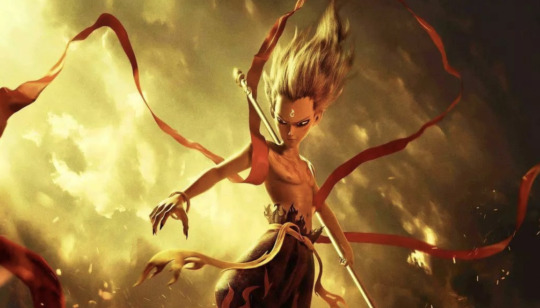
Adult Ne Zha from the Ne Zha 2019 movie
Ne Zha 2, released in 2025 and currently still airing, is now the eighth-highest grossing movie of all time and China’s biggest-ever film. It’s genuinely quite an incredible film, and is worthy of being the biggest animated movie of all time.

I recommend everyone go watch it even if you don’t know Chinese: it’s super funny and the visuals are astounding. Obviously it’s not perfect, and there are a lot of problems with it, but I don’t know, I’m still a big fan. For being made on such a small budget, it somehow manages to outdo Hollywood animation on sheer spectacle. If you can get IMAX tickets, get them!
If there is no other reason, watch the movie for Ao Guang, Ao Bing's dad. Remember the fugly old dragon from the 1979 version?

Well, this is him now. Talk about a glow-up. No joke, when he appeared on screen the entire movie theatre gasped out loud.
By the way, if you were wondering where Ne Zha falls on the timeline in relation to our friend Wukong, Ne Zha was born several thousand years before Wukong burst out of his rock. As such, when Wukong encounters him and *ahem* kicks his ass *ahem*, Ne Zha is already a deity working for the Heavenly Court.
I hope after reading this incredibly-long post, you learned something new about Chinese culture and our favourite lotus root, Ne Zha!
#chinese mythology#ne zha#ne zha 2#chinese#mythology and folklore#chinese culture#animation#ancient china#china#nezha 2025#ao bing#nezha 2019#chinese animation
675 notes
·
View notes
Text




Wuzhen 乌镇 is a historic town located in the north of Zhejiang Province, China. It was first built in the 7th century during the Tang dynasty, and is characterized by its Jiangnan (region in eastern China) style architecture.


It lies within the triangle formed by Hangzhou, Suzhou and Shanghai. It has a total population of 60,000.
Wuzhen has been the permanent host place of the annual World Internet Conference, an international Internet conference held in China, since 2014.


#china#🇨🇳#chinese heritage#chinese culture#chinese#people’s republic of china#prc#chinese architecture#chinese history#sino#Jiangnan#east china#Eastern China#historic towns#chinese historic towns#Chinese historic cities#historic cities#Jiangnan architecture#jiangnan Culture#Zhejiang#Zhejiang province#wuzhen#traditional#traditional architecture#Traditional Chinese culture#River houses#canals
560 notes
·
View notes
Video
tumblr
茶宠chachong/tea pet (clay handicrafts for chinese tea culture)
9K notes
·
View notes
Text









Old Chinese houses are an inexhaustible creative space in terms of wooden interiors. To me, something alike is associated with childhood memories of a countryside house in Zhejiang.
Photo: ©遗产君
#ancient china#chinese culture#chinese history#chinese architecture#ming dynasty#qing dynasty#old china#chinese customs#wooden architecture#wooden buildings#wooden interior#vintage interior#interiors#interior design#interior architecture#interior#interior decor#interior inspiration#woodworking#wood carving
1K notes
·
View notes
Text
a cool look at how stunts in acrobatic lion dance work underneath the lion & in context!
the world of competitive lion dance is no joke, with some teams training year round for the purpose of competing. additionally, competition-grade poles follow standards set by international regulations, which detail how far apart the poles should be, their height, the diameter of the footpads, and more.
dancers are judged on the overall shape of the lion, emotional expression, accurate portrayal of their submitted storylines, etc. each team starts out with a base score of 10, and judges evaluate which points to deduct from there over the course of the routine.
775 notes
·
View notes
Note
If the coats with hoods aren’t historically accurate, what coats did Chinese people wear prior to the modern period?
Hi! Thanks for the question, and sorry for taking ages to reply!
By "coats with hoods", I assume you're referring to the doupeng/斗篷 (cloak/cape) commonly seen in modern hanfu and guzhuang (drama costumes), like the one below (x):

Chinese people did wear doupeng prior to the modern period, along with other kinds of coats. However, as I mentioned in my post here, historical Chinese doupeng did not have hoods attached to the cloak/cape. That is why many modern doupeng aren't considered historically accurate - because they have hoods attached. Below are examples of more historically accurate, hoodless doupeng (1/2):
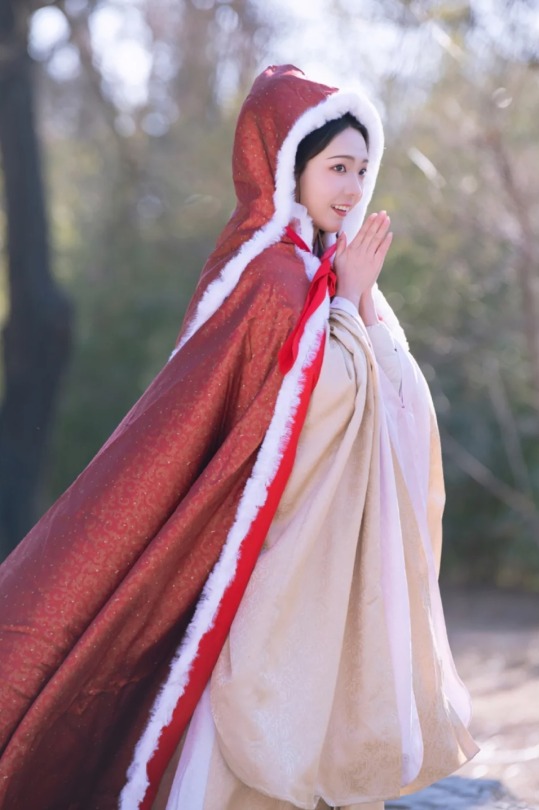
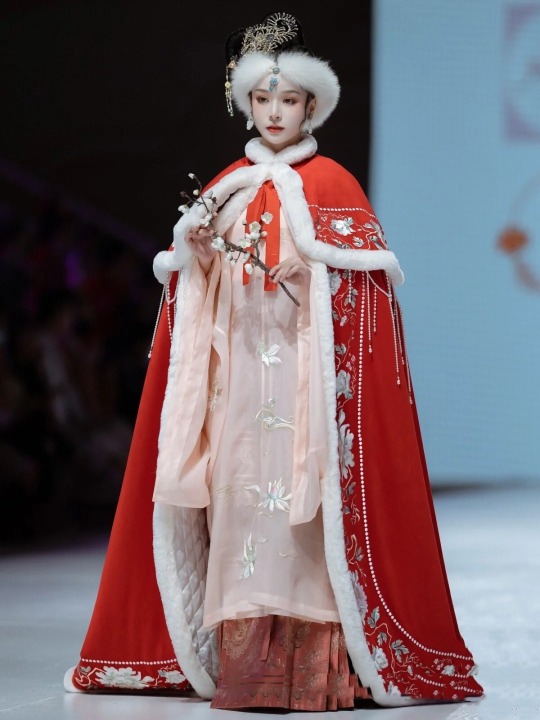
In the image on the above left, the model is wearing a separate, detached hood/hat called fengmao/风帽 (wind hat) which was historically worn to keep warm. Below - examples of fengmao (1/2):


Historically, fengmao was often worn with doupeng when travelling during cold weather (x). Below - women wearing doupeng & fengmao in historical art (top row), and Chinese opera performers wearing doupeng & fengmao as part of their costumes (bottom row) (x):
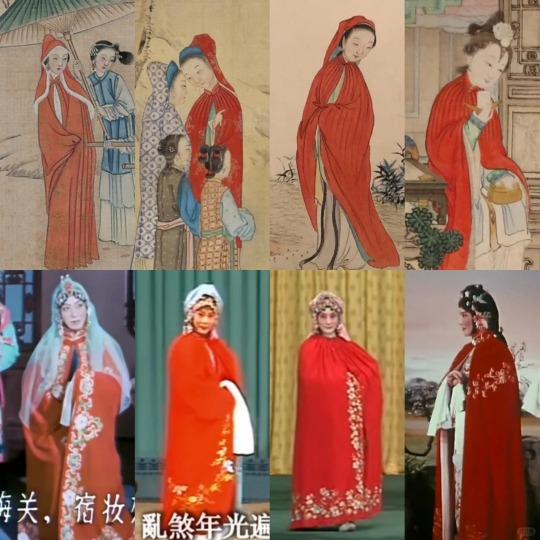
Oftentimes the doupeng & fengmao are matching, which can give the impression that they are attached - but if you look carefully, you can see that they are separate. Below - Chinese opera costume (x):
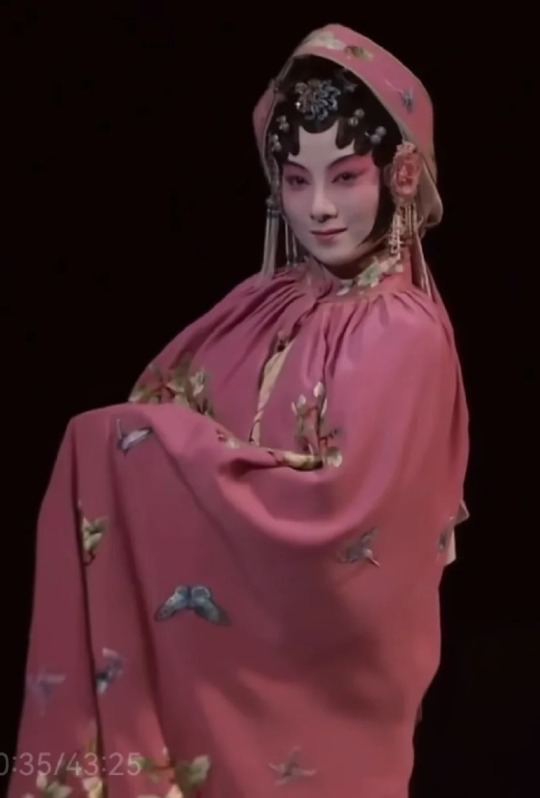
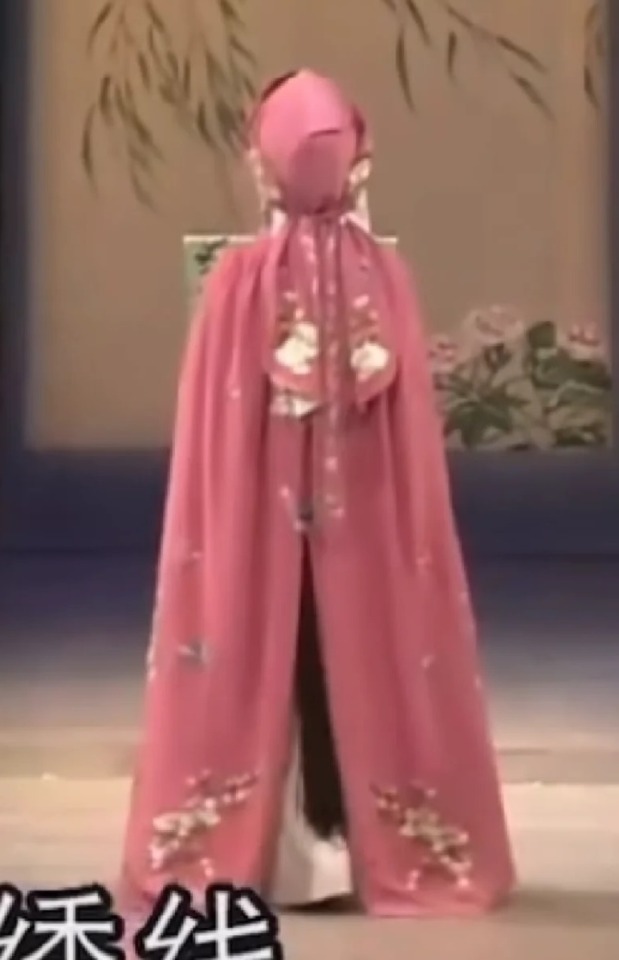
Below are historical photos of women wearing doupeng in 1920s Beijing - note how they are hoodless (1/2):


Hooded doupeng, in contrast, are more similar to historical western cloaks, such as the below American/European cloaks from the 18th century (1/2):


The hooded doupeng of modern hanfu are likely based on those seen in guzhuang dramas - another instance of drama costumes not being the most historically accurate (x):

An example of a drama with a historically accurate depiction of doupeng & fengmao is the 1987 TV adaptation of Dream of the Red Chamber. As seen in the below images, the characters wear hoodless doupeng & occasionally matching fengmao as part of their winter wardrobe (1/2/3):
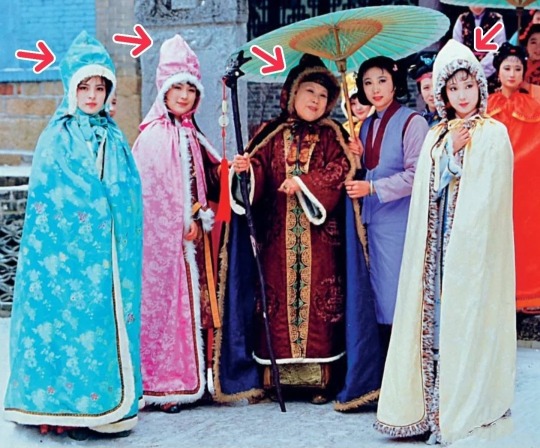

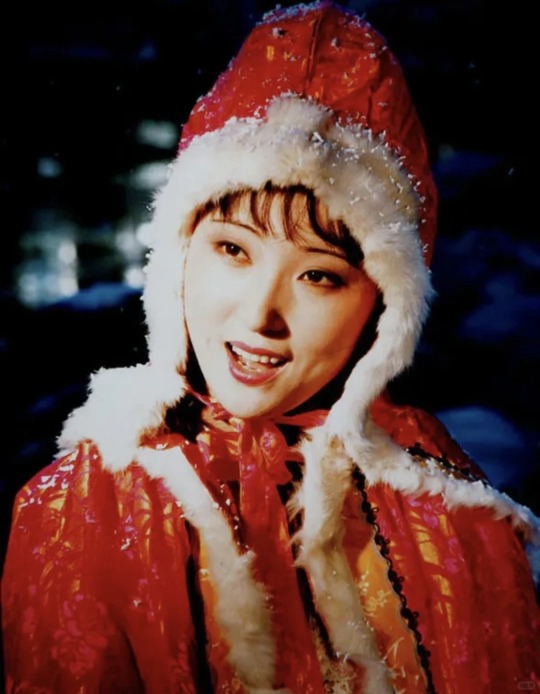
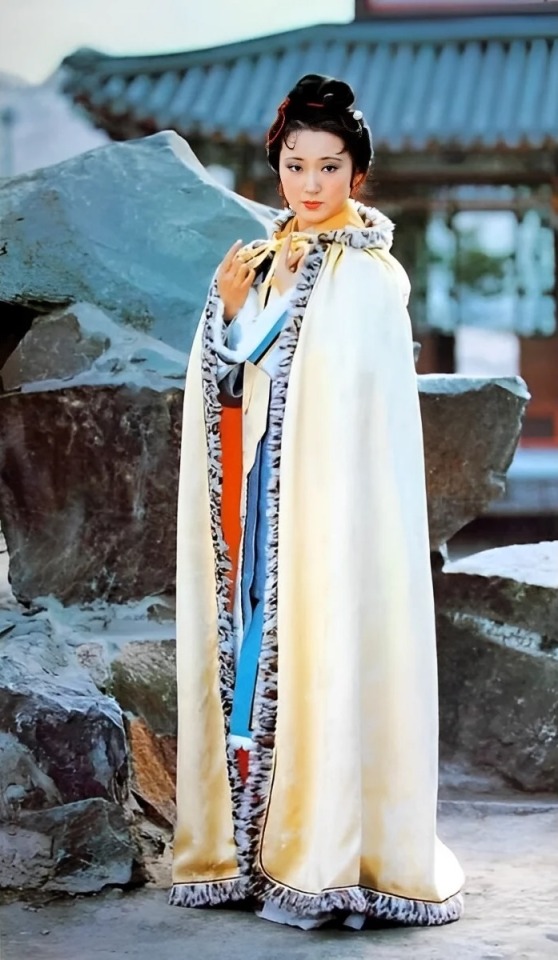


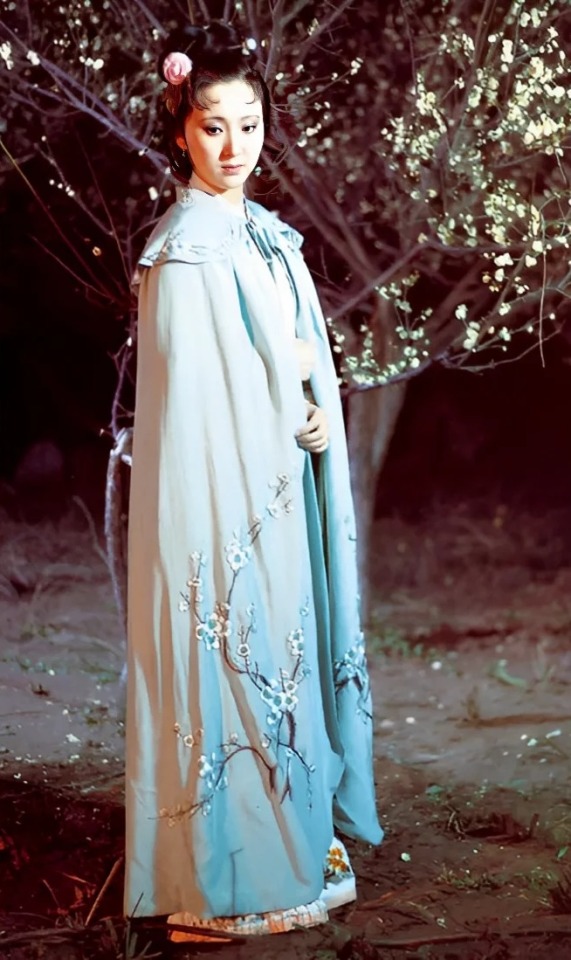

The 1994 TV adaptation of Romance of the Three Kingdoms also depicts historically accurate, hoodless doupeng & matching fengmao worn by men (x):
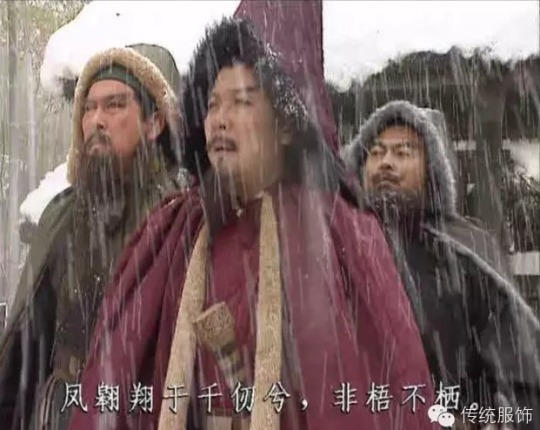
For more references, please check out my doupeng, fengmao, and winter wear tags.
Hope this helps!
#hanfu#doupeng#cloak#cape#fengmao#hats#winter wear#hanfu accessories#chinese opera#opera costume#xifu#drama costumes#dream of the red chamber#>1000#china#history#reference#ask#reply#chinese clothing#chinese fashion#chinese culture
1K notes
·
View notes
Text
Rope dart by Sifu Han Liang (含亮老师)💪👊🔥
#kung fu#wushu#chinese martial arts#kung fu girl#martial arts girls#kung fu star#chinese culture#kung fu world
3K notes
·
View notes
Text
How to Make Guqin
Posting some of the steps to making a Guqin here. These aren't all the steps, but just a few that I've learned since arriving at the workshop :D
The teacher asked me today if I preferred making or playing the Guqin and I must say...playing is a lot less taxing physically xDD Between the carving, shaving, sanding, painting + lacquer allergy risk this entire process is quite demanding on the body. With this job you def don't need a gym membership xD

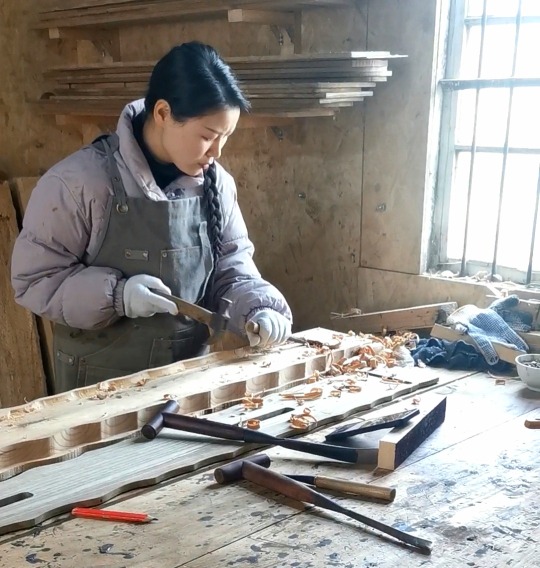
Carving The Guqin is hollow between the top and bottom board so we need to carve out all the wood in the centre. If you purchase a factory-made Guqin, this would be done mostly by machine and then some details done by hand. Here, it's 90% by hand.

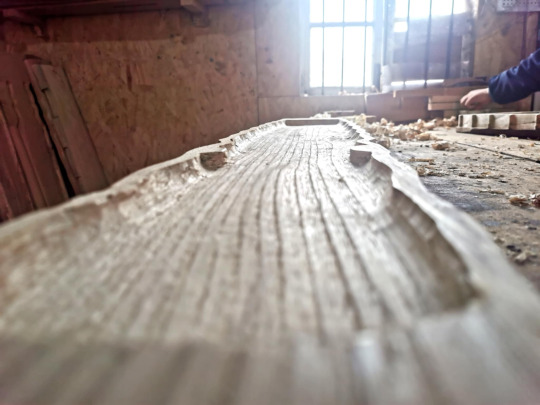

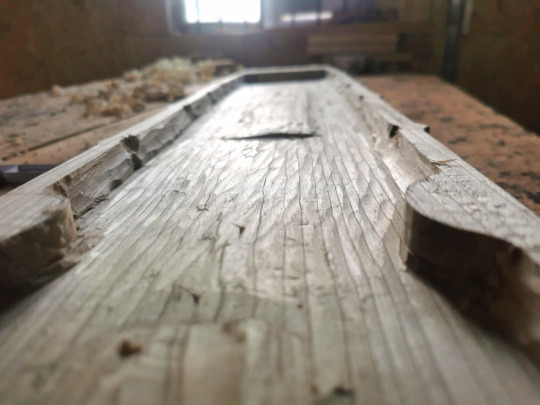

Inside the Guqin When carving out the Guqin, we leave 2 slight bumps at the front and back, called the "Nayin/纳音" (sound absorber). This is so when the sound is vibrating through the centre it has something to bounce off of, otherwise it would sound too hollow.
A factory-made Guqin would leave two rectangular nayin since that's easier for the machine, here we carve it down into a gradual hill (pic 2, 3). Sometimes the Guqin maker can also play around with this to give the instrument a more unique sound, like pics 2 and 3 where my teacher decided to not complete carve the bottom flat and instead in this ripple-like pattern, and also do a U shaped nayin rather than just a little bump.
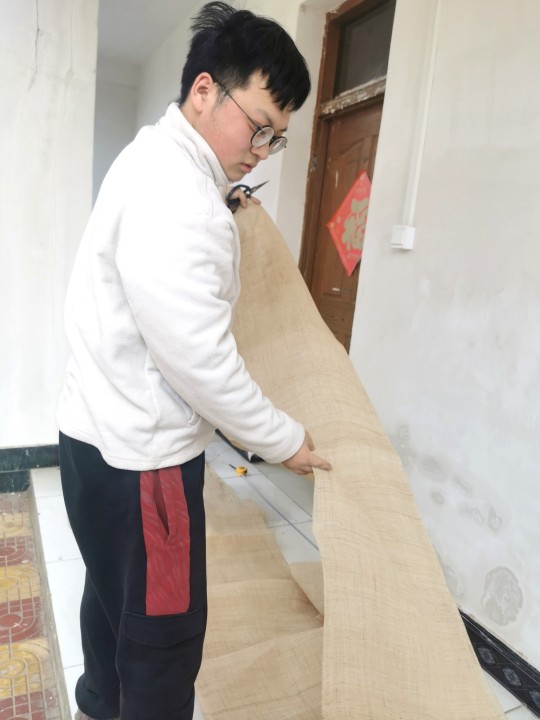
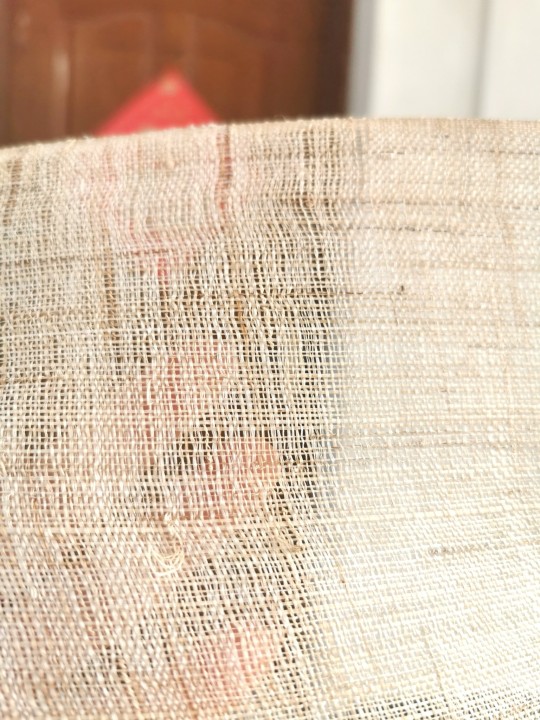
When putting on the first layer of paint, we also wrap the Guqin in fabric to prevent the wood from cracking in the future.


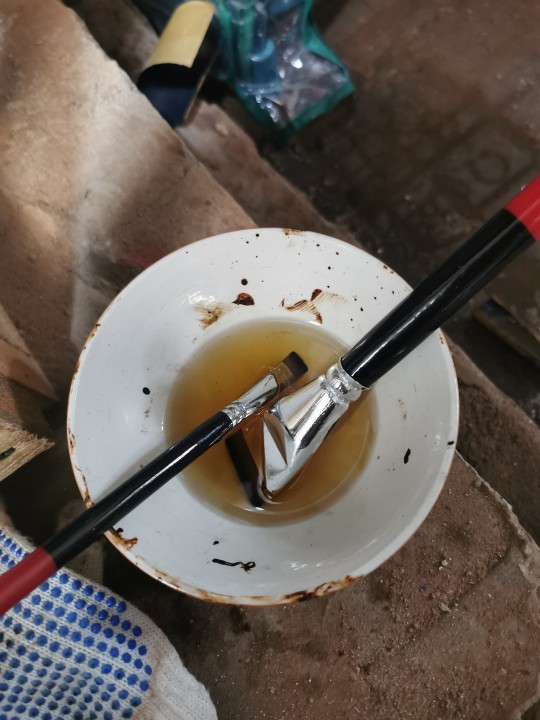
Guqin paint in a workshop like this is lacquer (生漆 or 大漆), mixed with powder deer antler (鹿角霜). In a factory it would be chemical paint.
Most people experience some form of allergy to lacquer (Google says it's kind of similar to poison ivy allergy), you get rashes and small bumps on your skin all over your body (even if you don't touch the lacquer). My roommates are both having reactions these past few days, so far I've had a mild reaction around my ankles. As I mentioned in a previous post, there's no medication to completely cure or stop the reaction, you just need to "tough it out" until you build an immunity (and even then you'll still have a reaction but just very mild).
Lacquer starts off white or light beige, then oxidizes as soon as it meets oxygen. Within a few hours it becomes pitch black and then slowly dries over a few days (the hotter and damper the weather the faster it dries).
If you get lacquer on anything (including skin) you need some type of oil to remove it. The most effective is kerosene (blue jug). So essentially our work rooms are a big fire hazard with kerosene oil everywhere as we wipe it off our cloths, hands, tables, floor, etc.
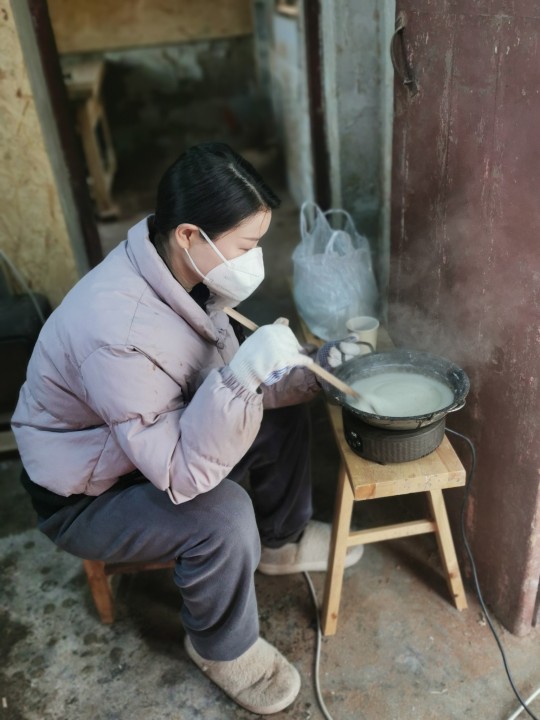
Mixing some glue paste for the first layer of paint (this is to help the fabric adhere to the Guqin).

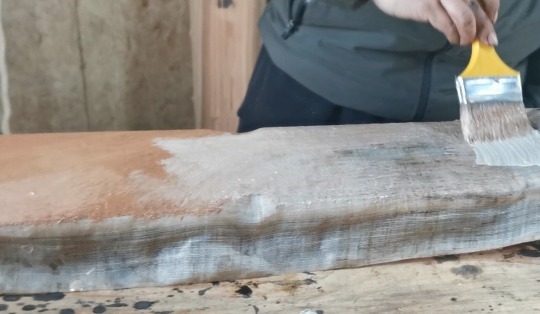
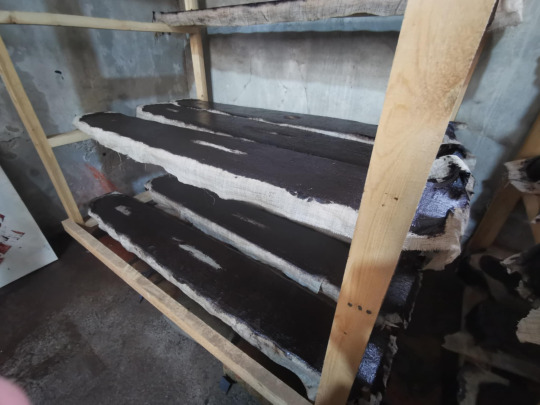
We put one layer of the paint+glue paste on the Guqin, then put the fabric on top, and slather on another layer of the paint+glue paste making sure it's thick enough to hide the fabric pattern.
Then we leave it to dry (pic 3). You can see even as we worked the paint darkened from light beige/brown to a dark, dark brown. By the next day it'll become fully black.

So much work goes into making one of these instruments. So many variables can influence the sound of a Guqin, including size, shape, thickness and density of the wood, type of wood, age of wood, shape and size of the nayin, height of the bridge, type of string, etc. A master Guqin maker needs to take all of these into consideration in order to make one instrument that has a beautiful sound.
To make a full Guqin, we need at least 1.5 years, possibly longer. My arms ache, my legs ache, my back aches, my fingers are sore, my ankles itch (my fellow students said one of their fingers swelled so much their phone screen didn't recognize his touch, and last summer his bumps got infected and they had to take him to the hospital), I've got scrapes and cuts all over my hands, just after 2 weeks of working here xDD
#中国#Guqin#古琴#instruments#Chinese instruments#Chinese culture#Chinese history#中国历史#中国文化#中国乐器#how to make guqin#斫琴
275 notes
·
View notes
Text
April 20, Beijing, China, National Museum of China/中国国家博物馆 (Part 2 - Dehua white porcelain exhibition/德化白瓷展 continued):
This was actually the very first piece I encountered at the entrance to the exhibition, a gigantic basket of flowers (probably over 1 meter tall and over 1 meter wide?), the entire thing made of porcelain.
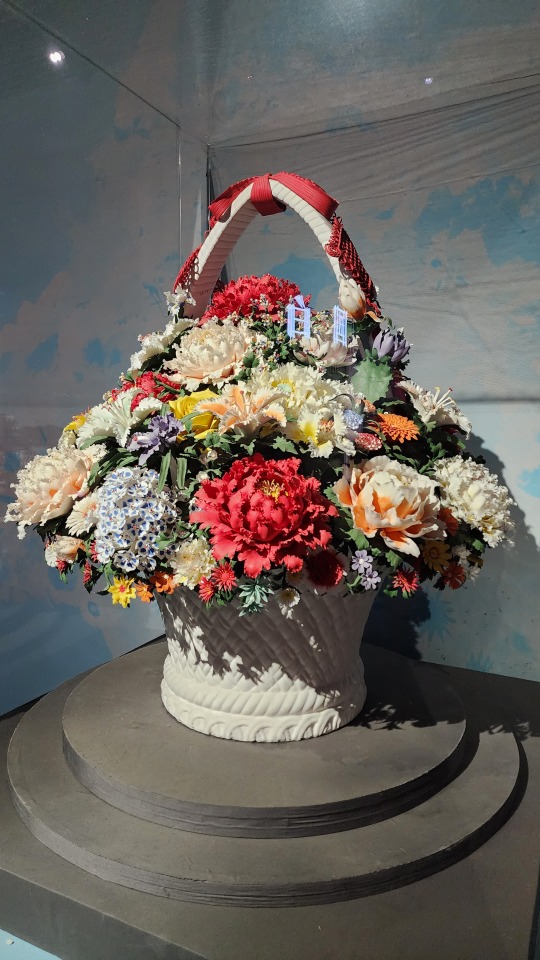
And to reiterate, every part of every piece is porcelain. Though I will say that despite the ultra-realistic shape of the flower petals and leaves, the only detail that hinted at these flowers being made out of porcelain was that the painted colors weren't as vibrant as real flowers. That's it. If you don't examine it up close you really can't tell that it's all porcelain.
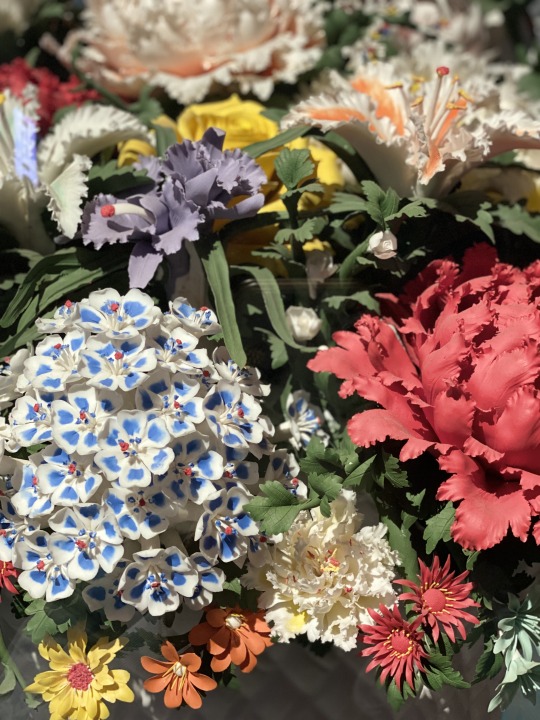
This is a good place to roughly introduce the technical side of Dehua white porcelain. The color of Dehua white porcelain mainly comes from the clay it uses, which is a special kaolin clay (gaolingtu/高岭土 in Chinese) found in Dehua. The clay mineral used naturally contains sericite and quartz, both of which are silica minerals and may have contibuted to the almost translucent look of the finished pieces; it also contains comparatively high amounts of potassium oxides, while the amount of iron oxides present is low. Due to the intricate designs of the pieces, the firing success rate may be very low. All those pieces involving super thin parts representing fabric or paper or flower petals? They may bring the success rate down to about 5%. Which means many of these pieces may be the 15th-20th try that finally survived firing. For people who are more interested in the chemistry of Dehua white porcelain, this paper goes into depth about it. There's also a great book in Chinese that goes into depth all about Dehua porcelain. (link goes to the first chapter only)
Continuing on, this is one of many Guanyin/观音 (Avalokiteśvara) statues at the exhibition, again with light clothing made out of porcelain:
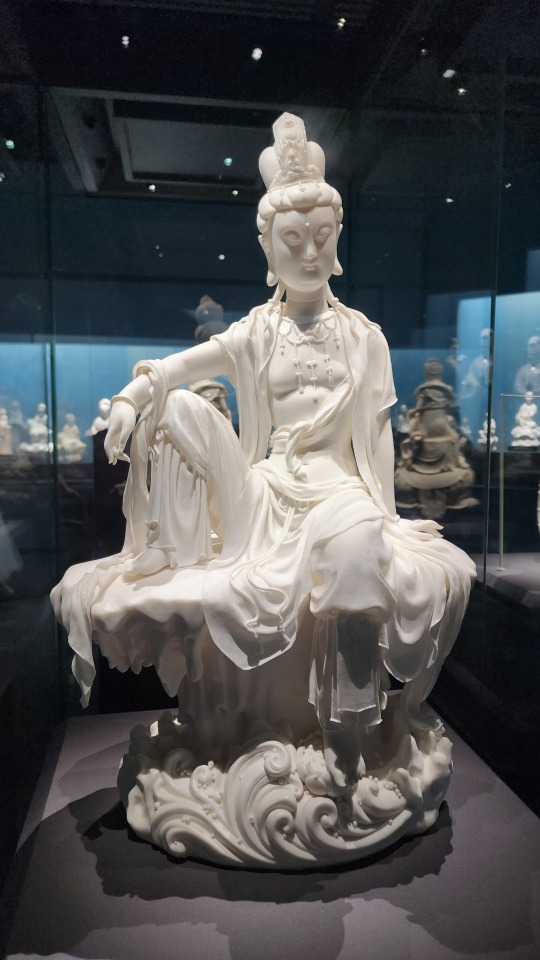
More Guanyin statues in various classic depictions/forms, of which there are 33 total. This particular form is called Yulan Guanyin/鱼篮观音 (鱼篮 means fish basket), and comes from a legend where Guanyin transformed into a beautiful female fish vendor in order to guide mortals.
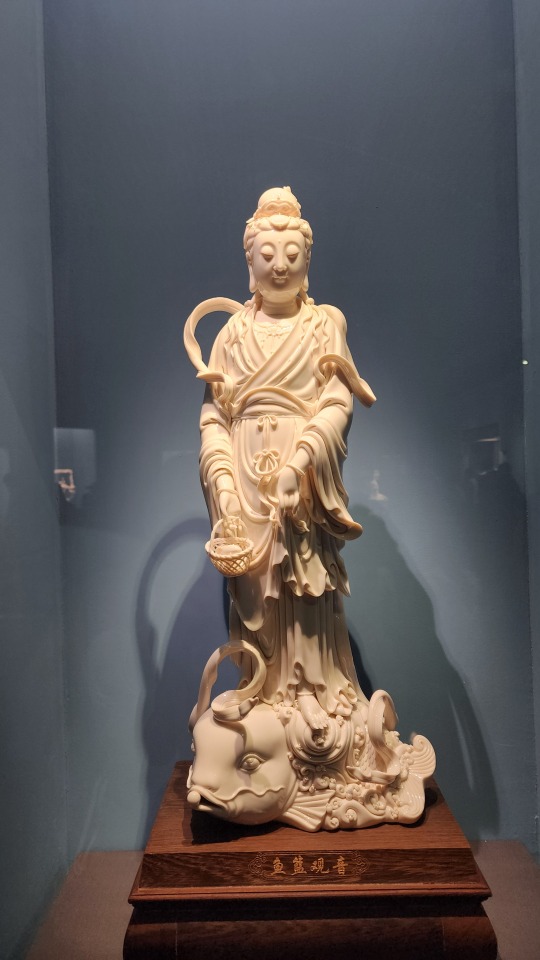
I believe the text here reads 持经观音 (Guanyin holding scripture)? The Guanyin here is holding a vase instead of a scroll though.
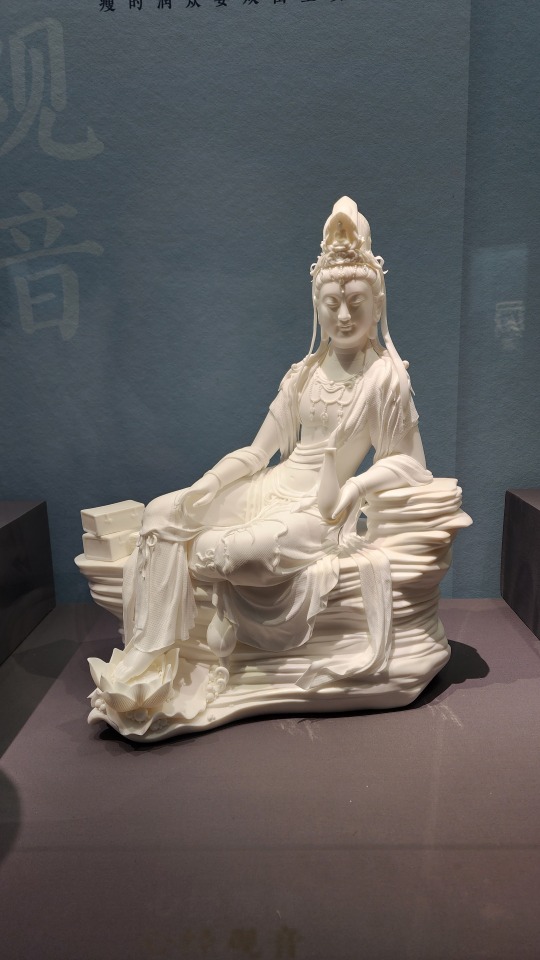
This is a classic depiction of Guanyin with a little bit of a modern-ish twist? Guanyin is often depicted with a vase of divine water, but here it forms a circle.

Despite some of the Guanyin statues having the amazing ceramic "clothing", this one remains my favorite, just because of the sense of space and serenity that this simple "frame" design creates:
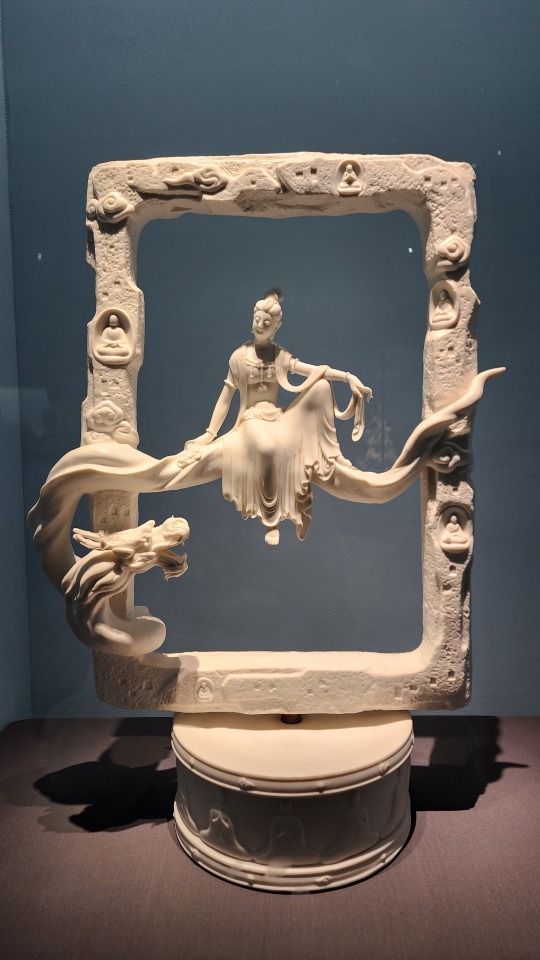
And this very literal take on "thousand arm Guanyin" (千手观音). It's giving me that "biblically accurate angels" vibe:

Buddha floating atop.......idk what that is but the texture is amazing:

A fully painted statue of Guanyu/关羽. The gradient and detailed patterns on his robes is amazing:

Two identical (I think?) statues of the daomadan/刀马旦 (female commander archetype) character Mu Guiying/穆桂英 as she would appear in Chinese traditional opera, one painted and one unpainted. The word 巾帼英雄 in the title means "hero in women's headscarf", which is a term used exclusively in reference to female heroes. There's also the phrase "巾帼不让须眉", which roughly means "those in women's headscarves aren't inferior to those with beards and thick brows"


Porcelain depiction of Dunhuang's famous feitian/飞天 figures, in the classic pose of playing pipa in reverse (called 反弹琵琶). The clothing on this figure is made of porcelain, but this time also painted:

A porcelain statue of a couple in traditional Lhoba/Luoba/珞巴 clothing. The Lhoba/Luoba people are one of China's 55 少数民族 who mainly live in the south-eastern region of Tibet Autonomous Region, and as of 2019, it is the 少数民族 with the smallest population

A porcelain statue of a woman in traditional Miao/苗 clothing. I love how the artist recreated the traditional Miao silver crown in porcelain.

Painted porcelain bust of a woman wearing the Xunbu/蟳埔 "flower crown", named a zanhuawei/簪花围. The town of Xunbu in Fujian province is known for its tradition of zanhua/簪花, or wearing flowers in one’s hair.

Porcelain statue of a Buddhist monk wearing a zhiduo/直裰 (the robes on the inside) and a jiasha/袈裟 (काषाय/kasaya; the garment on the outside that drapes over the left shoulder). From its looks, one can tell that zhiduo originated from hanfu, but with some minor changes (sidenote, this is not the same as the zhiduo of Ming-era hanfu). Jiasha evolved from the clothing of Indian Buddhist monks, but there appears to be a lot of influence from Central Asia and ancient Greece as well (link goes to pdf; this article is in Chinese).

Some modern-themed pieces. Look at those dresses omg


A porcelain statue of Hua Mulan/花木兰, the character from traditional Chinese literature and opera that inspired the Disney character. I will say though this pose reminds me of someone else.......

#2024 china#beijing#china#national museum of china#dehua porcelain#blanc de chine#porcelain#chinese art#chinese culture#art#culture#buddhism#guanyin
694 notes
·
View notes
Text


Guangzhou ivory carving 广州象牙雕刻 from Guangzhou, Guangdong province, Qing Dynasty.
Guangdong ivory carving started in the Han Dynasty when China still had its own species of elephant (before 100 BC). Ivory products are also found in the tombs of the local Nanyue Kingdom.
Ivory carving became prosperous in the Ming and Qing dynasties that Cantonese craftsmen were recruited to Beijing to serve the imperial family. Developing large models of houses and other large and showy pieces.


This art is still somewhat popular in the region today, but the ivory has been replaced by contemporary artists with other materials such as animals bones, due to ivory trade becoming illegal.
(The artifacts in this post date to the Qing era)
#China#🇨🇳#Chinese#sino#Guangdong#Guangzhou#Cantonese#ivory#ivory carving#Chinese ivory carving#Chinese carving#carving#Chinese arts#Chinese culture#Chinese heritage#chinese craftsmanship#chinese interior#chinese crafts#chinese decor#interiors#decor#Cantonese carving#Cantonese ivory carving#Guangdong ivory carving#Guangzhou ivory carving#Guangdong ivory#Cantonese ivory#Guangzhou ivory
349 notes
·
View notes